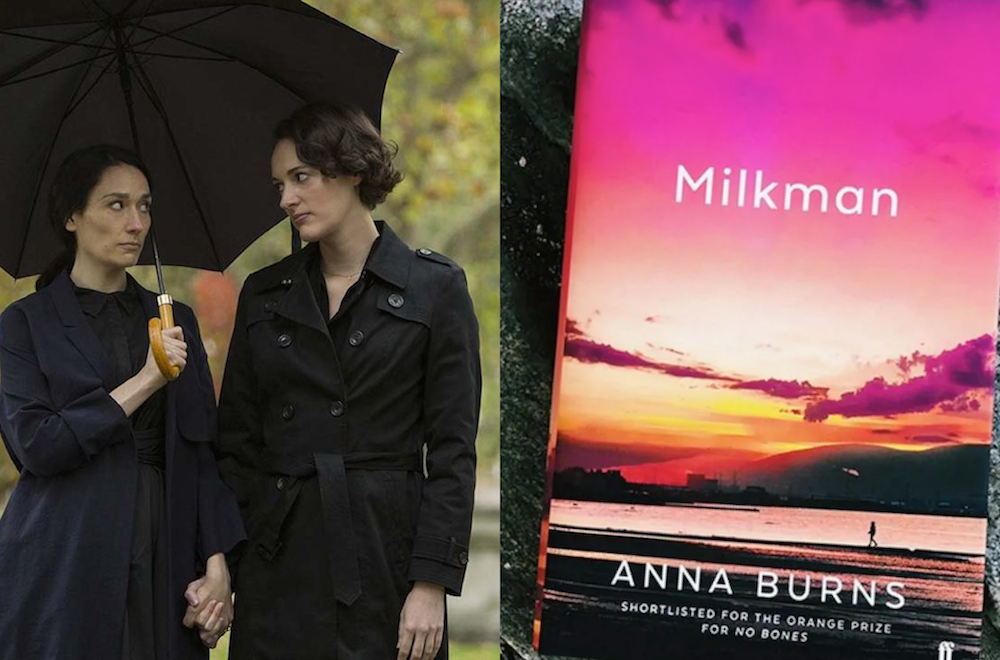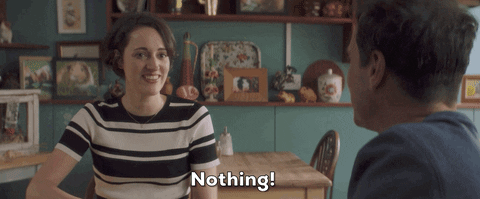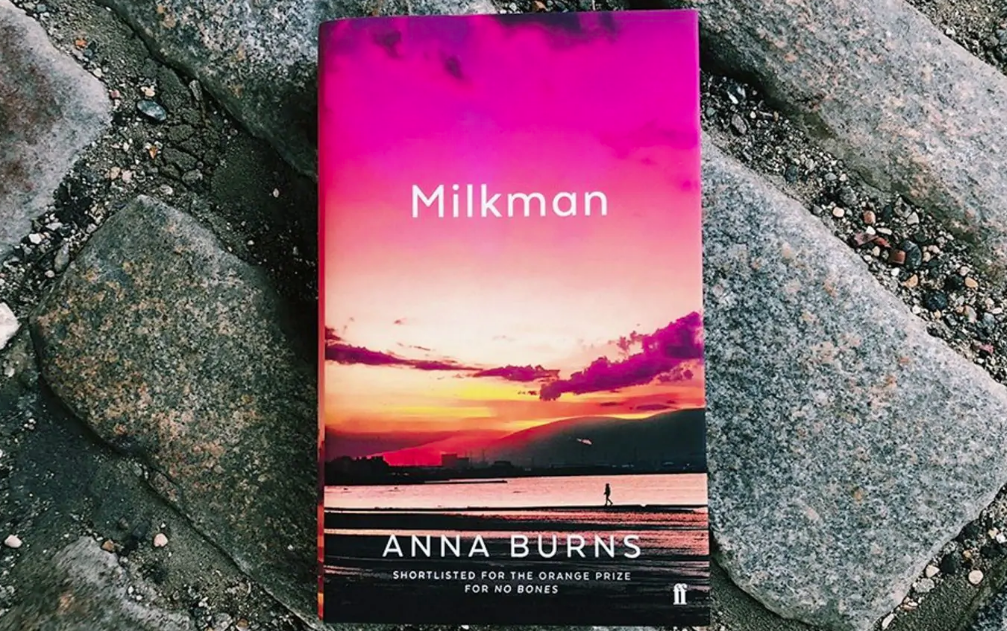Fleabag and Milkman: narrators expose the story, and us

Fleabag, the second television show from Phoebe Waller-Bridge, has been covered exhaustively in fevered, gleefully hyperbolic terms. I have described the second and most recent season to friends as ‘the best television I have seen in recent memory’ multiple times, with an unsettling amount of eye contact and not the slightest shred of ironic affection.
Even if you feel less strongly about this show with the vaguely rude-sounding name, it’s probably fair to say that the general consensus is: Fleabag is very good. Like all things now that we collectively decide are very good, or very bad, or are just successful at inciting a critical mass of unsettling feelings, Fleabag has also gone through the cycle of public opinion.
Shortly after the show aired in the UK in April 2019, Ellen E. Jones in The Guardian argued that the show was for posh girls, due to its portrayal of and associated failure to demarcate class, a narrow gaze betrayed by the way Fleabag ‘so insistently invites the audience to relate’. Rebecca Liu spins Jones’ point in Another Gaze, identifying astutely that universal relatability shouldn’t be assumed to be the source of the show’s overwhelming appeal precisely because Fleabag is young, white, pretty, wealthy (via family, if not personally). She situates Fleabag among similar protagonists of recent memory (Girls’ Hannath Horvath, Sally Rooney’s Marianne in Normal People) whose apparent capacity for identification by the audience is often attributed to the conventionally unlikeable things they do—but in a way that is unavailable to those outside of their particular socioeconomic and cultural demographics. If this is what invites the prospect of self-recognition, then we should ask: by whom?
Thankfully, Fleabag doesn’t need the promise of relatability or likeability (or lack thereof) to be superlative. It nearly doesn’t bear repeating at this point, but the script is exquisitely sharp, rendering everything for us at exactly the right focal length; less evident from the show’s origin as an acclaimed one-woman play, but just as delightful, is the terminal velocity dialogue between the characters. Watching it is to revel in the qualitative rhythm of daily life, if not exactly the aesthetics, speed or high drama of the real thing. Fleabag zips through her year of regiments and renunciation—and successful growth as a small business owner, just in case we were misled by the superficial framing of the first season—and stills in the loaded silence after the music turns off, the staccato panic of our secret single emotional behaviours being seen. Beyond the script, the biggest punchlines, ecstasies and devastations are limited to what’s on the characters’ faces (the exception being Claire’s haircut, which incredibly manages to be all of the above). Like good animation, sometimes that which differs wildly from the technically realistic is the most evocative.

Fleabag the show is the diametric opposite of the two-camera sitcom with one-bite lines and studio audience (or worse, a laugh track), although Fleabag the character makes it unflinchingly clear that she knows we are watching. It is also the antithesis to the sprawling, self-important fantasy show where the last-minute thesis statement that “stories are important” needed to be explicitly set out in the show’s dying minutes. Had any of those tired characters made eye contact with the audience, it would have been over: the absurdity of the whole exercise would have been made plain. Fleabag turns to us with her nose bleeding, a few minutes of the season two premiere under her belt, and declares, this is a love story. We totally believe her.
When Fleabag looks at us, it’s the silent, split-second glance at your friend that communicates your mutual exasperation/delight/disbelief at the current situation, or the text message sent across a crowded room, holding eye contact the whole time. Fleabag is not asking you to be her so much as she’s making sure that you know what the whole red-lipsticked ordeal feels like.
How else would she tell us? Throughout the series, we never learn Fleabag’s name—from Fleabag herself, or anyone else. From her stepmother, its absence is at once both a rebuffing and a gauntlet thrown: she may be a long-time family friend and godmother to her now-stepdaughters, but her pointed avoidance is emblematic of the logical conclusion of Fleabag’s self-aware, but still entropic relationship with her family. Disappear for a year? it says. We haven’t missed you at all. I would obviously be remiss not to mention that the same goes for the god/stepmother: Fleabag does unto her as Godmother (Olivia Colman’s billing) does to Fleabag. From her sister Claire, it’s almost unremarkable: who else, besides a sibling, could drive the other person to that specific brand of familiar, inarticulable frustration? From the (Hot) Priest, it feels obvious. No need to use someone’s name when, in their vicinity, you are already wholly attuned to them. And so we are, to Fleabag.
Other blank spots fester too. We don’t see the bigger picture with Fleabag’s best friend Boo until the end of the first season, or her mother, relinquished slowly and sporadically throughout the second. You could argue that Fleabag (or more cynically, Waller-Bridge) is reluctant to show these things to us because she wants us to like her, to more easily step into her shoes, or that we should be taken by the reluctance itself. After all, it may well be easier to talk about sex than betraying your best friend, money over the boundless grief for your mother. But it comes out eventually. In context of the generous abandon with which Fleabag brings us into almost every other aspect of her life, or the growing occasions when she forgets we’re there, it’s unsatisfying to stop our explanation of the show’s magnetism at its acknowledgment of its audience, and not to ask why Fleabag’s spinning this narrative in the first place. Even without distinctive labels, it’s possible to delineate the character and the story.

From the moment of opening Milkman, Anna Burns’ 2018 Man Booker-winner, we’re also acutely aware that no name is given for the protagonist, and pretty much anything or anyone else. Middle sister attempts to inoculate herself from the quotidian, creepily mundane violence of living among renouncers of the rule of the country over the water with books, maybe-boyfriend and a steadfast refusal to engage with the fearsome belief of her mother, the community and the Loyalist paramilitary ‘milkman’ that she is seeing the milkman (not to be confused with the actual milkman, whose relationship with middle sister’s mother could not be more different than the ostensible or actual association between middle sister and the milkman).
Our narrator, middle sister, never announces that this is a story about the Troubles, the period of prolonged low-grade war in Northern Ireland between Catholic Unionists and Protestant Loyalists through the latter third of the 1900s, in those very words. It doesn’t need to—the things that middle sister tells us about, and the way that she is unwilling to put a label on anything, to signal any allegiance that isn’t absolutely necessary, are more than enough. When middle sister sets off on a multi-page detour about maybe-boyfriend’s devotion to this one car part or the comprehensive, threatening geography of her walk to French lessons, it isn’t from narrative necessity, just to make sure we get what’s going on. In those drawn out moments, Milkman is more tender, scathing and specific than a novel with any abundance of proper nouns. It’s middle sister’s willingness to explain certain things, and the unwitting divulgence of her attention to detail for particular things despite aiming to detach from the chaos around her, that reveals the most.
Mark O’Connell zeroes in on the significance of this way of storytelling in his review of Milkman in Slate: ‘…at the very center of the novel’s diagram of concentric oppressions is the relentless force with which each of Burns’ characters police their own inner and outer lives. Language itself, specifically the English language, becomes an agent of collusion in this complex arrangement of oppression.’ When there is no convenient shorthand for things that we find important and want to protect, we resort to relational, reductive ways of telling: context substitutes for text. The proliferation of language to avoid unpleasant or dangerous truths (the latter, more often than not in Milkman) is not incidental, but necessary to the story. It’s not entirely clear whether this is how middle sister speaks about the world, or thinks of it in private too. Even before the whole milkman affair is lain out before us, the reflexive, almost epigenetic suspicion in middle sister, and everyone else around her, is unavoidable.
The other side of this is also that Milkman has been dismissed as a book where thankless things happen too slowly, or is just very difficult to read. Subjective as that may be, it would be a different, lesser thing without that exploration of power at multiple levels: the granular, discursive, everyday prose, the pervasive and overarching hostility between states— and something else in between, hopelessly entangled with the rest. The milkman’s imposition on middle sister, and the ensuing pressures from her family and friends, is a kind of violence to which women are distinctly subject. The book is clear-eyed about danger from this perspective first, before exposing everything else. Maybe boyfriend takes middle sister’s insistence that he pick her up on isolated interface roads as shame, rather than her one-sided way of keeping him safe from rumours and car bombs. When middle sister’s longest friend from primary school finally points out that her reading-while-walking and looking nearly-blank and giving nothing away makes her a ‘community beyond-the-pale’:
‘“This is the main point,” she said, which had me, then, surprised. “I thought Milkman was the main point,” I said. “No,” she said. “Why would he be the main point? He was the point before the point.”’
Attachment to the milkman is the threat under which middle sister relents and, finally, acknowledges that obstinate non-commitment is unsustainable. Not in her world, where conflict and power in its many forms are equal parts feature and function.
The alternative narrative would be one that is hazardous by its very existence or nothing at all, the latter of which middle sister has already unsuccessfully tried in her community The impossibility of telling certain stories from the Troubles remains real: Patrick Radden Keefe has written about the Belfast Project, a collection of oral histories from paramilitaries that would remain sealed until the interviewee died, and were subject of a temporary injunction by one of the interviewees when the Northern Irish police subpoenaed the institution in a murder case; his subsequent book about the Troubles is titled Say Nothing (and won the 2019 Orwell Prize for political writing alongside Milkman). The risk inherent in being a woman who speaks up against revered male figures or the status quo has not subsided and is as familiar as ever, even in a different time and place.
Twisting the conventions of narration is not a uniquely feminine, or feminist exercise. But it’s clearly one of the most effective ways of unbalancing the dynamics between a work, or a character, and its audience. When it underpins a story that deals with particular kinds of power, the way in which it’s done and how we react to it are incredibly revealing. And when that story is about a woman, there are endless layers of tropes and expectations, systems and privileges to unpack.
It’s worth it. To question the narrator and the way they tell the story is to account for the power they hold, or not, both within the story and in our perception of it. In Fleabag, the intensely personal exposes the political; in Milkman, state violence obscures its systemic and individual effects. Our narrators watch us watching them; when they turn towards or away from us, it’s easy to take it as a matter of fact. It is infinitely more interesting to ask why.
Milkman by Anna Burns is available now at Readings bookstore or wherever good books are sold.
For readers located within Australia, the final episodes of Fleabag are currently available to stream on ABC iView or purchase the full series via iTunes or Amazon Prime.

Audrey is a law graduate living in Melbourne, with a background in cognitive science. She is interested in the interface between law, science and technology, and has written about the legal significance of robots in The Hitchhiker’s Guide to the Galaxy.